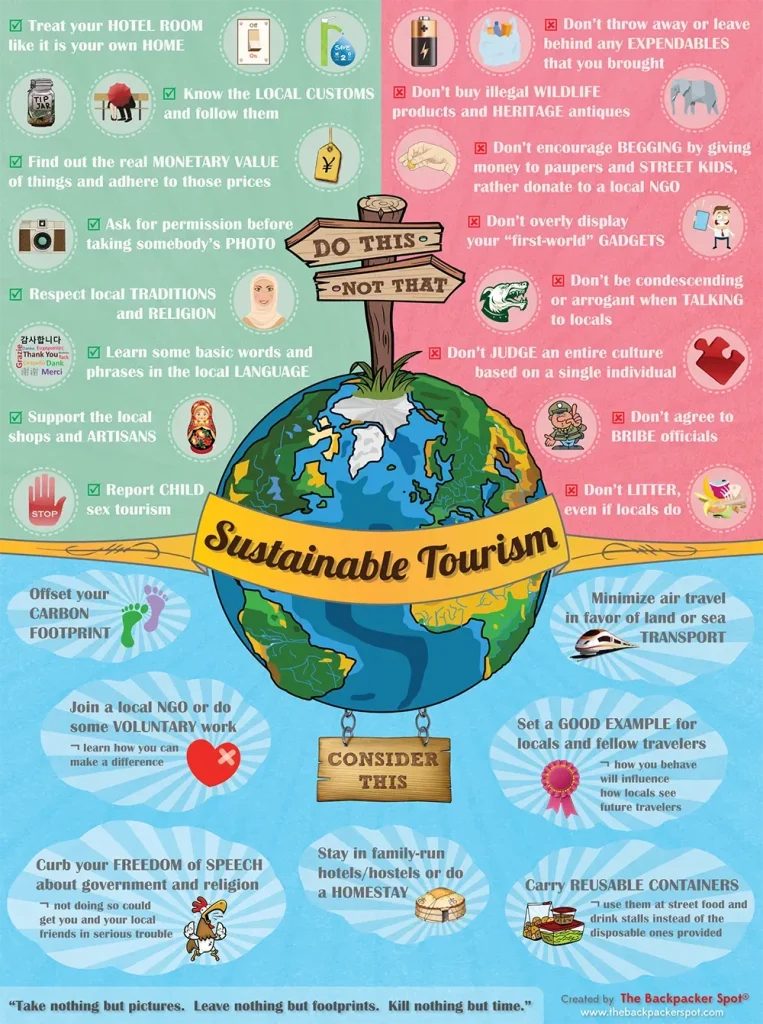Sustainable travel marks a practical, everyday way to explore the world that benefits travelers, host communities, and the environment. By choosing what matters—eco-friendly travel practices, low-impact travel choices, and responsible travel tips—you reduce harm while enriching cultural exchange, and practical guidance for travelers. This approach also supports local economies, protects biodiversity, and keeps destinations vibrant for future visitors by encouraging authentic experiences and fair livelihoods. Whether you’re planning a weekend getaway or a longer expedition, sustainable tourism can guide decisions from transport to lodging with green travel ideas. The goal is to turn curiosity into positive impact through thoughtful, transparent choices and a mindset that values people and place.
In this frame, the idea translates into eco-conscious journeys, ethics-forward explorations, and low-emission adventures. It centers on balancing environmental care with respect for local cultures, nourishing communities, and authentic experiences. Seen through the lens of green travel ideas and sustainable tourism, travelers pursue carbon-aware planning and responsible engagement. This terminology aligns actions with outcomes, helping audiences connect with broader practices while still enjoying rich, meaningful trips.
Sustainable travel in practice: turning intention into everyday action
Sustainable travel is not a distant ideal or a luxury for the few; it is a practical, everyday approach to exploring the world that benefits travelers, local communities, and the planet. At its core, sustainable travel rests on environmental stewardship, social equity, and economic viability for host communities. When you pair low-impact travel with respectful cultural engagement, you reduce emissions, protect biodiversity, support local livelihoods, and preserve destinations for future visitors.
To put sustainable travel into practice, start with small, tangible steps that compound over time. Before you go, research destinations that benefit from responsible tourism and sustainable tourism certifications; pack with intention to reduce waste; build a flexible itinerary that prioritizes public transit, walking, and cycling. Embrace eco-friendly travel practices and apply responsible travel tips that guide your choices, turning curiosity into positive impact while creating richer, more meaningful experiences.
Embracing eco-friendly travel: low-emission choices for every trip
Getting there and getting around can define the footprint of a trip. Favor rail or bus when feasible, opt for direct flights to minimize takeoffs and landings, and consider airline carbon offset programs if air travel is unavoidable. Balance convenience with planet-friendly goals by grouping trips or choosing longer, lower-emission layovers that let you explore new places on land instead of adding unnecessary flight segments.
On arrival, choose green accommodations that demonstrate energy efficiency, water conservation, and support for local communities. Eat locally sourced dishes to reduce food miles, carry a reusable kit to minimize single-use plastics, and ask about sourcing and waste reduction. Use carbon calculators to estimate emissions, seek transparent labels and credible certifications to avoid greenwashing, and let sustainable tourism-informed decisions guide your activities so every interaction is guided by eco-friendly travel principles, responsible travel tips, and green travel ideas.
Frequently Asked Questions
What are practical steps for practicing sustainable travel on your next trip?
Practical steps for sustainable travel include planning with purpose, selecting destinations that practice sustainable tourism, and packing to minimize waste. Look for eco-labels or credible certifications to guide decisions in sustainable travel. Favor rail, bus, walking, or cycling to support low-impact travel, and if flying is unavoidable, choose direct routes and consider carbon offset programs as part of responsible travel tips. Choose green accommodations that save energy and water and preferably locally owned properties that reinvest in the community. Embrace local food to realize green travel ideas in daily life, carry reusable bottles and bags to cut plastic, and learn about local customs to deepen your sustainable travel experience.
How can I evaluate travel options to ensure truly sustainable travel and avoid greenwashing?
To avoid greenwashing, look for credible certifications and data showing real outcomes in sustainable tourism. Verify labels and ask providers how they measure environmental impact, support local communities, and improve livelihoods. Prioritize experiences that benefit locals, wildlife-friendly activities, and transparent reporting. Use carbon footprint calculators and, when possible, offset emissions as part of responsible travel tips. Read reviews from locals and travelers, choose locally owned accommodations and tours, and demand transparency about sourcing, waste reduction, and community benefits to ensure your sustainable travel aligns with genuine environmental and social impact.
| Section | Key Points |
|---|---|
| Definition & Why it matters | Sustainable travel is a practical approach to exploring the world that minimizes environmental harm while maximizing cultural exchange and local benefits; it aims to reduce emissions, protect biodiversity, and preserve destinations for future visitors. |
| Three Pillars | Environmental stewardship, social equity, and economic viability for host communities; low-impact travel should be paired with respectful cultural engagement. |
| Practical steps (overview) | 8 actionable steps: Before you go; Getting there; Where you stay; Getting around; Activities; Food, waste and water; Respect, learn, and contribute; Measuring impact and avoiding greenwashing. |
| Common myths | Myths vs. reality: costs more; eco-labels guarantee perfection; you must abandon comfort. Reality: small investments support local economies and outcomes; certifications help but require scrutiny; comfort can be maintained with sensible choices. |
| Tools & resources | Carbon calculators; reputable eco-labels and certifications; local tourism boards and community organizations; apps/platforms to find locally owned businesses and low-impact experiences. |
| Putting it all together | Develop a practical plan: list upcoming trips, identify 1–2 improvement areas (transport, lodging, activities), and apply the steps to keep your footprint low while maximizing learning and connection. |

